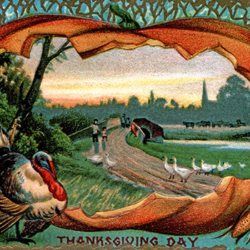 Recently, I performed our National Anthem as part of a brass ensemble. The event was a golf tournament organized by members of the Bahia Shriners, which raised funds to help children being treated at Shriners hospitals.
Recently, I performed our National Anthem as part of a brass ensemble. The event was a golf tournament organized by members of the Bahia Shriners, which raised funds to help children being treated at Shriners hospitals.
The tournament was held in a 55+ community. When I entered, I had to stop at a security shed, present identification, and receive a pass to drive on the property. The community is a quiet area with very little traffic, nice landscaping – even some rolling hills! I thought to myself: what a great place for kids to ride bikes. Even though it was Saturday, there were no children to be seen; kids simply don’t often reside in these types of communities.
I was in the area for about an hour, and everyone I met was very friendly. Yet, it didn’t feel like a “neighborhood.” I realized what was missing was a generationally diverse group of people.
What is generational segregation?
A few days later — by chance — I heard the term “generational segregation.” This isn’t another weekly outrage or sound bite; it’s a real issue.
The book 30 Lessons for Living: Tried and True Advice from the Wisest Americans by Karl Pillemer points out that over 1/3 of people under 30 regularly communicate with someone over the age of 65. However, when relatives are excluded, that number drops to about 5%. Pillemer predicts that we may eventually become the most generationally segregated society ever.
 Who cares about age segregation?
Who cares about age segregation?
You should. My mother had a plate that hung on the wall of our house that read “we get too soon oldt undt too late schmart.” Ain’t that the truth! Age integration goes both ways; it isn’t just about younger people learning and benefiting from older ones. When zoning laws, HOA rules, etc. separate people by age, we widen the generation gap. Every generation has experiences that relate to them, and sharing these experiences provides value to society.
You’re never too old to learn from others
My favorite holiday is Thanksgiving – serving also as a great example of this. My mother was an administrator at an assisted living facility. Many of the residents there did not have relatives come to visit, and had seen some difficult times.
My father and I invited some of those folks to spend Thanksgiving with our family. I admired how they persevered, and the stories that went around the table at those times were like a priceless, living history lesson. One point really stood out – how these folks were so excited about opportunities to interact with younger generations.
 Don’t fall victim to generation stereotypes
Don’t fall victim to generation stereotypes
I have been a financial advisor for more than 30 years and I still learn from conversations with clients both older and younger than me. We are subtly — and in some cases not so subtly — generationally divided by rules, politics, media and even our own ignorance. Don’t get sucked into misconceptions about age or generational differences, especially if they’re coming from the latest sound bite. Take time to interact and empathize with people of all ages – you might just learn a thing or two!
June 2018
Content in this material is for general information only and not intended to provide specific advice or recommendations for any individual. No strategy assures success or protects against loss. Investing involves risk including loss of principal.

 Who cares about age segregation?
Who cares about age segregation? Don’t fall victim to generation stereotypes
Don’t fall victim to generation stereotypes


